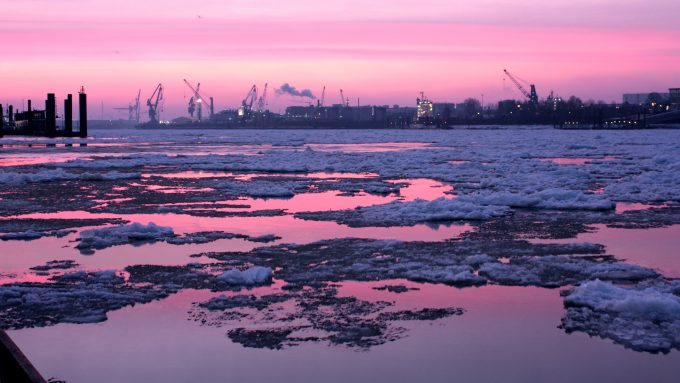Germany's state subsidy cut 'won't push rail freight onto the roads'
Concerns of a major modal shift from rail to road after the German government reduced ...

The port of Hamburg may have prevented further declines in the first half of 2017, but the delays surrounding the expansion of the Elbe Fairway continue to cost the German gateway.
Container volumes for the period were flat on last year’s at 4.45m teu, and while some saw this as a welcome respite after two years of decline, the port continued to lose ground.
Both Rotterdam and Antwerp – the latter has superseded Hamburg as Europe’s second-busiest container port – saw volumes grow by 9.4%, to 6.66m teu, and 1.8%, to 5.14m teu, respectively.
Hamburg’s joint chief executive of marketing, Axel Mattern, pointed to a 3.2% dip in empties as one area where the failure to dredge and widen the Elbe was hobbling the port’s traffic.
“Shipping companies tend to route empty boxes for weight reasons via other ports, partly because the adjustment of the Elbe fairway is still not implemented,” said Mr Mattern.
“Once the channel is dredged, mega-ships will be able to bring an additional 1,600 [plus] teu to Hamburg and take that many again on departure.”
Despite declines from seven of the port’s 10 biggest trading partners, Mr Mattern was pleased with Chinese and Russian numbers, describing the volume growth as “gratifying”.
Chinese volumes were up 1.3% to 1.29m teu, while Russian figures were up 4% to 230,000 teu; Swedish volumes also shot up 9.8% to 140,000 teu, albeit from a low starting point.
Overall though, this was not enough to offset a 3.5% decline among the top 10 to 2.65m teu from 2.75m teu last year, with only the UK providing another, marginal, growth spot.
“It is very interesting to see that our 10 leading container trade partners – accounting for around 60% [2.7m teu] – recorded a 3.5% downturn,” said Mr Mattern.
“Whereas the other countries achieved 5.3% growth to 1.8m teu, with Vietnam one of these, attracting attention with double-digit growth.”
But with three years of back-to-back growth in the number of ultra-large container vessels calling at Hamburg, the need to make progress on the Elbe is mounting up.
In the six months to June, 54 vessels in the 18,000-20,000+ teu range called at Hamburg, a 134.8% increase compared to last year, which itself more than double 2015’s performance.
Not quite as spectacularly, vessels in the 14,000-17,900 teu called 36.5% more times during the first half of 2017 as they did during the same period in 2016.
And at the same time, the decline of ships calling in the 10,000-13,900 teu continued, down almost 30% compared to last year.
In February, Leipzig’s Federal Administrative Court finally rubber-stamped the Elbe deepening project, after environmental protests brought the project to a hold in 2013.
Despite receiving the court’s approval, the stop work order issued four years ago remains in place, with the port first having to address two major environmental concerns.
Firstly, it must first find substitute areas for hemlock and water dropwort plant that live along the Elbe, and must address concerns surrounding the fluctuation of river salinity.
Following the court’s February announcement, chairman of the Hamburg Port Authority Jens Meier said a project team would be working “at full power” to address these issues.
And while he could not comment on expected timeframes, a port source told The Loadstar that, assuming there were no more protests, work could start within the next year or two.
Comment on this article